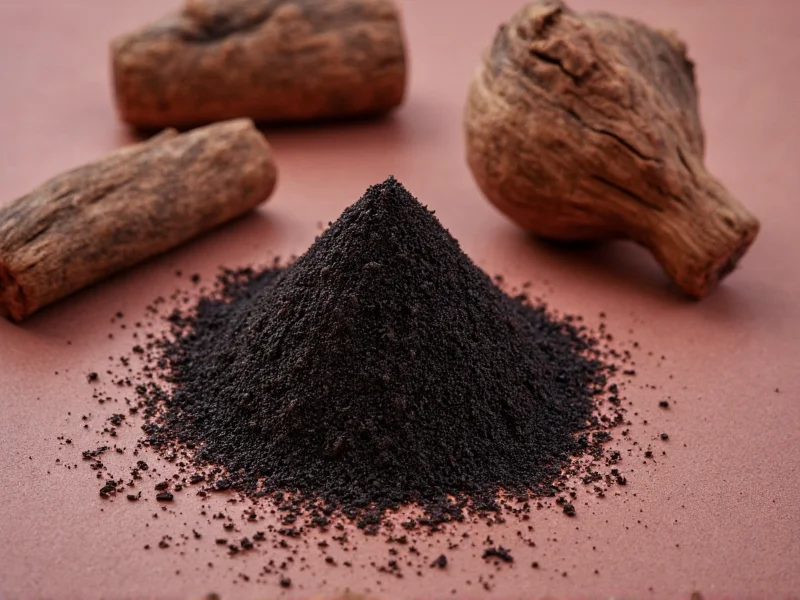Licorice flavor represents one of the most polarizing taste experiences worldwide. Understanding what gives licorice its unique profile requires examining both botanical origins and chemical composition. The distinctive licorice taste comes primarily from glycyrrhizin, a compound found in licorice root that's 30-50 times sweeter than sugar yet carries complex earthy, woody notes.
The Botanical Source of Authentic Licorice Flavor
True licorice flavor derives from Glycyrrhiza glabra, a perennial herb native to southern Europe and parts of Asia. The plant's root system contains glycyrrhizin, the key compound responsible for licorice's signature sweetness and characteristic aftertaste. When processed, licorice root extract delivers that unmistakable flavor profile that divides palates globally.
Glycyrrhizin: The Compound Behind Licorice Taste
Glycyrrhizin constitutes approximately 2-24% of licorice root's dry weight, creating a complex flavor experience. This triterpene glycoside provides:
- Intense sweetness (without sugar content)
- Earthy, woody undertones
- Slight medicinal or herbal notes
- Long-lasting aftertaste
Unlike artificial sweeteners, glycyrrhizin activates multiple taste receptors simultaneously, explaining why some people perceive licorice flavor as overwhelmingly strong while others enjoy its complexity.
Natural Licorice vs. Artificial Licorice Flavor
A critical distinction exists between genuine licorice flavor and what many Americans recognize as "licorice" candy. In European and Asian markets, black licorice typically contains real licorice extract. However, most red and black "licorice" products in the United States use anise oil or star anise extract instead, creating what's technically an anise flavor rather than true licorice.
| Flavor Type | Primary Compound | Origin | Common Products |
|---|---|---|---|
| True Licorice | Glycyrrhizin | Licorice root (Glycyrrhiza glabra) | European black licorice, some herbal teas |
| Anise-Based "Licorice" | Anethole | Anise seed or star anise | American "licorice" candy, root beer |
| Fennel | Anethole | Fennel seed | Mediterranean cuisine, some liqueurs |
Why People React Differently to Licorice Flavor
Genetic factors significantly influence how individuals perceive licorice flavor. Research shows that variations in taste receptor genes, particularly TAS2R38, affect sensitivity to glycyrrhizin's bitter components. This explains why some people describe licorice as deliciously complex while others find it unpleasantly medicinal.
Cultural exposure also plays a role. In regions where licorice-flavored products are common from childhood, people develop greater acceptance of the flavor profile. Scandinavian countries, for example, consume more licorice per capita than any other region, with varieties ranging from salty to sweet.
Global Variations in Licorice Flavor Preferences
Licorice flavor manifests differently across cultures:
- Nordic countries: Salty licorice (salmiakki) combines ammonium chloride with licorice extract
- Netherlands: Drop varieties include sweet, salty, and mixed licorice candies
- United States: Most "licorice" candy uses anise oil rather than real licorice
- Asia: Licorice root features in traditional medicine and herbal teas
Common Products Featuring Licorice Flavor
While candy represents the most recognizable licorice-flavored product, this distinctive taste appears in diverse applications:
- Traditional medicines (particularly in Chinese and Ayurvedic practices)
- Herbal teas and tisanes
- Certain liqueurs like Galliano and some absinthes
- Tobacco products (particularly cavendish pipe tobacco)
- Some soft drinks and root beers
Health Considerations of Licorice Flavor
While generally recognized as safe in moderate amounts, glycyrrhizin affects potassium levels and blood pressure. The European Food Safety Authority recommends limiting glycyrrhizin intake to no more than 100mg daily (approximately 4-5 pieces of strong licorice candy). People with hypertension or heart conditions should exercise particular caution with genuine licorice products.
Identifying Real Licorice Flavor
When shopping for authentic licorice-flavored products, check ingredient lists for:
- Glycyrrhiza glabra extract
- Licorice root extract
- Glycyrrhizin or glycyrrhizic acid
Products listing anise oil, star anise, or anethole as primary flavorings contain what's technically an anise flavor rather than true licorice. Understanding this distinction helps manage expectations about flavor profiles and potential health effects.
Frequently Asked Questions About Licorice Flavor
What gives licorice its distinctive flavor?
Glycyrrhizin, a compound found in licorice root (Glycyrrhiza glabra), creates licorice's signature sweet yet earthy flavor. This compound is 30-50 times sweeter than sugar and activates multiple taste receptors, producing licorice's complex flavor profile with sweet, woody, and slightly medicinal notes.
Why does licorice taste different in various countries?
The difference stems from whether products use real licorice extract or anise-based flavoring. European and Asian licorice typically contains genuine licorice root extract, while most American "licorice" candy uses anise oil or star anise extract instead, creating a distinctly different flavor profile that's sweeter and less complex.
Is black licorice the same as red licorice?
No, they're fundamentally different. Black licorice traditionally contains licorice root extract (or anise in American products), while red licorice contains no licorice compounds at all. Red licorice is typically flavored with fruit flavors like strawberry or cherry, making it a completely different confection despite the similar name and shape.
Why do some people hate licorice flavor?
Genetic variations in taste receptors, particularly TAS2R38, affect how people perceive glycyrrhizin's bitter components. Some individuals are genetically predisposed to find licorice overwhelmingly bitter or medicinal. Cultural exposure also plays a role, as people raised in regions where licorice is common develop greater tolerance for its distinctive flavor profile.
Can you be allergic to licorice flavor?
True licorice allergies are rare but possible. More commonly, people experience reactions to glycyrrhizin's effects on blood pressure and potassium levels rather than an actual allergy. Those with hypertension should monitor licorice consumption, as excessive glycyrrhizin can cause pseudoaldosteronism, leading to headaches, fatigue, and muscle weakness in sensitive individuals.











 浙公网安备
33010002000092号
浙公网安备
33010002000092号 浙B2-20120091-4
浙B2-20120091-4